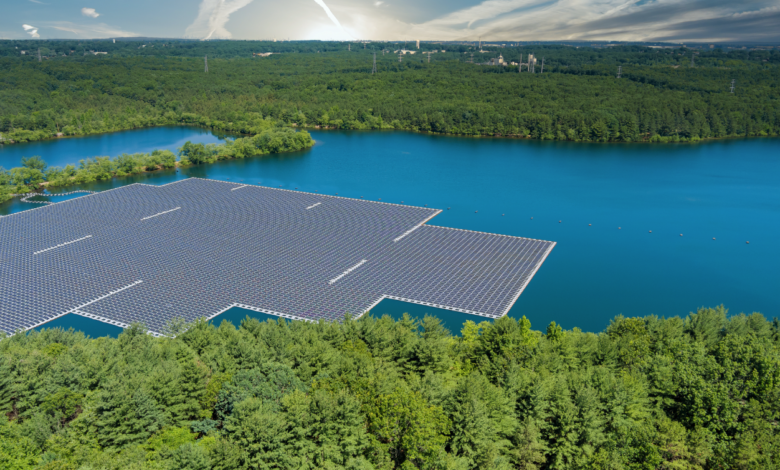Floating photovoltaics on lakes, where is the greatest potential?

The floating photovoltaic on lakes, canals, basins and even coasts is becoming increasingly valuable thanks to national funding of various kinds. Over the years, more and more countries – starting with South East Asia – have started to use water instead of soil to grow solar power. The advantages are intuitive. The approach allows not only to save land, where availability is low and land prices high, but also to take advantage of the double benefit of these systems. On the one hand water allows to cool solar panels helping to maintain high operating efficiency; on the other hand floating photovoltaic modules can help to save water, reducing losses by evaporation.
The potential of floating photovoltaics in the world
A win-win situation on paper, but one that cannot adapt in the same way to all countries and that still hides unclear aspects and shady areas. New information on the subject is now being provided by research by scientists from Bangor and Lancaster Universities, together with the British Centre for Ecology and Hydrology. The team wanted to calculate the global potential for implementing solar panels on inland waters, determining the daily electricity production for the floating photovoltaic on lakes and reservoirs worldwide.
The analysis has estimated overall over 1 million water bodies with a surface area of more than 0.1 km2, filtering a specific type: those located no more than 10 km from a town, not placed in a protected area and which did not dry up or freeze for more than six months per year. Once found the lakes and artificial reserves with these conditions – 67,893 water bodies – the researchers used the available climate data for each location and calculated the production of a hypothetical floating photovoltaic system, positioned to cover only 10% of the water surface.
Photovoltaic floating on lakes, how much can it produce?
The results, published in Nature Water, show how electricity generation changes due to altitude, latitude and season. Overall, the study calculated that floating photovoltaics on selected lakes and basins could produce 1,302 TWh in a year. “A considerable part of the production […] would be generated by water bodies located within specific countries – reads the article – including large ones such as China (252 TWh), Brazil (170 TWh) and the United States (153 TWh). However, we also discover that some comparatively smaller countries can generate a considerable amount of electricity from floating photovoltaics“.
For the precision in 5 countries, the floating photovoltaic on the lakes could satisfy the entire electric requirement. These include Papua New Guinea, Ethiopia and Rwanda. Others, such as Bolivia and Tonga, would come very close, satisfying respectively 87% and 92% of the national electricity demand. In Europe, the best results would be in Finland (17%) and Denmark (7%).
The largest floating photovoltaic in Europe? It is in Portugal
Floating PV, risk assessment
However, the researchers also issue a warning: more research is needed on the overall environmental impact of solar floating systems on lakes and reservoirs. Suggesting that implementation decisions must necessarily take into account the intended function of water bodies and the way they are used, as well as the potential ecological impact. “Through shading – the authors write – we would also expect the FPV to have an impact on the growth and composition of phytoplankton communities, with knock-on effects on the aquatic food network”.





